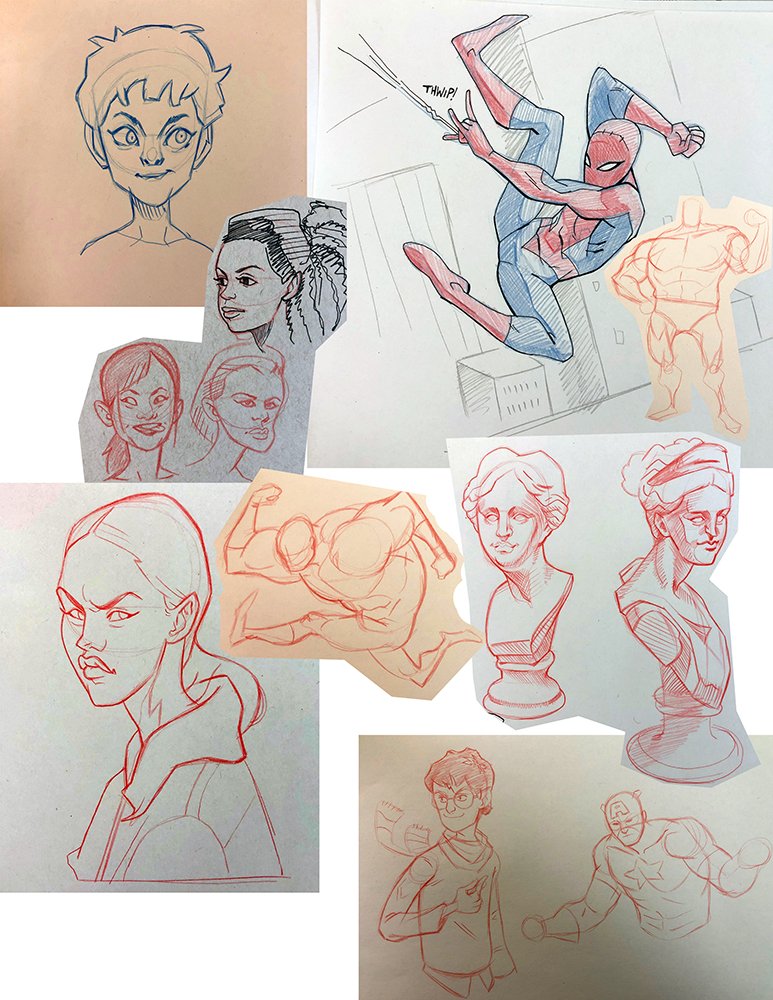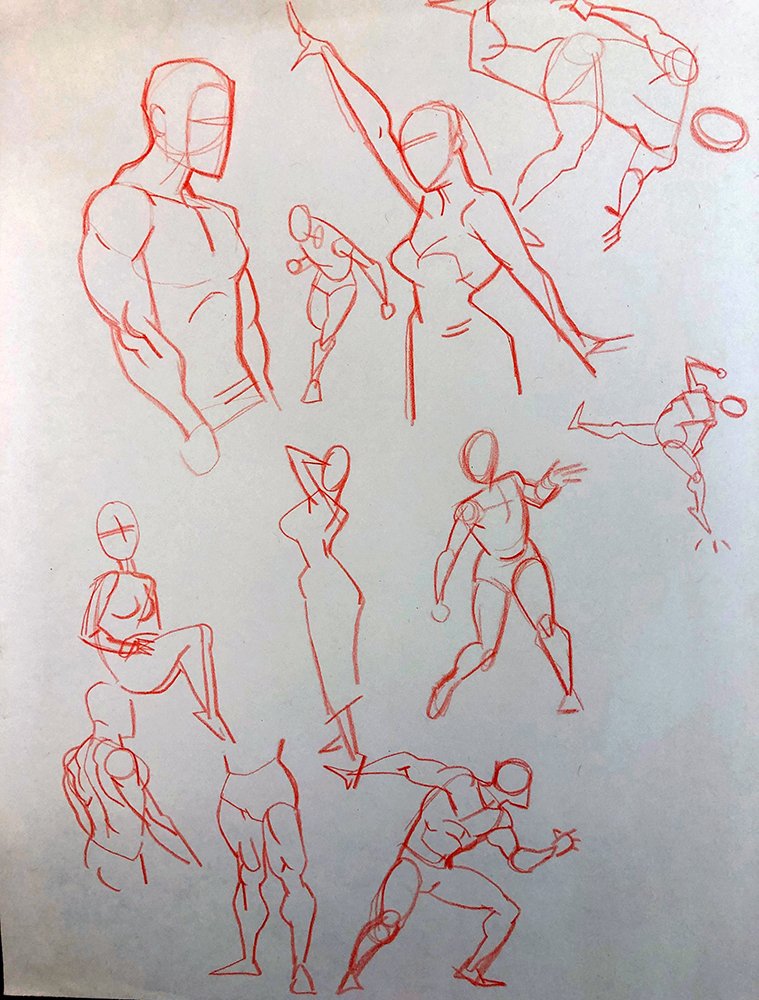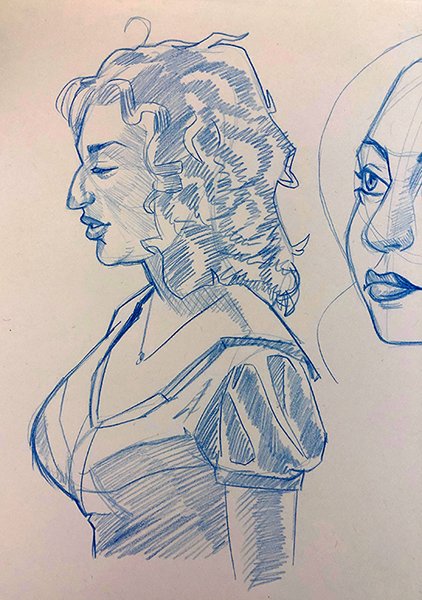Colored pencils fall into the same category of enthusiasm I reserved for graphite: They are versatile tools, cheap, easy to be grasped by anyone, and capable of the same wide range of expressive qualities as standard pencils with the added benefit of incorporating color. Color and pencil are like peanut butter and chocolate, two great tastes that taste great together.
That said, I do believe that the addition of color to the medium can be paralyzing for some artists (it was for me, for awhile). Color is a skillset in and of itself, subject to its own rules and working methods. Switching from a graphite pencil to a colored pencil is not a 1 to 1 translation, as now the artist must think about color harmony, temperature, saturation and a whole host of other concerns beyond just value. For this reason, I’d recommend at least an introductory color theory lesson before bringing them into the curriculum. Explaining primary, secondary, and complimentary colors will go a long way towards making students feel more comfortable before working with these things.
I’d also spend some time covering the various means of combining colors with colored pencils. This too is something I struggled with when I first started playing around with them. Multiple colors can be used to crosshatch, stipple, layer, overlay, and create smooth gradations, but these methods aren’t always immediately obvious to novices. If you want to get really crazy, solvents can be added into the mix causing the binding agent of the pencil to breakdown and the pigment to act almost like paint. A color can be laid down and manipulated on the surface using solvent and a paintbrush. Solvents can be toxic, so this method may best be reserved for older students.
The following resources may be helpful in teaching students colored pencil blending techniques:
“The Only Methods You’ll Ever Need for Blending Colored Pencil” Carrie L. Lewis
https://www.carrie-lewis.com/3-methods-blending-colored-pencil/
“8 Ways on How to Blend Colored Pencils Like a Pro” Jae Johns
https://jaejohns.com/how-to-blend-colored-pencils/
In class I tried my hand at Crayola “Color Sticks” which seem to be the halfway point between a traditional colored pencil and a pastel. Their large, blocky, hard edged shape made them a little unwieldy for the type of line drawing I was trying to do, but I could immediately see how intuitive they’d be for a more painterly approach, and I liked the way they reacted to the textured paper.
In my sketchbooks, I almost always work in red or blue colored pencil (or blue ballpoint pen). I like the “glide” of a pencil, but with graphite, I find I tend to go too dark too early, and I leave smudges and fingerprints all over the place. Colored pencils have the same range, feel and texture of graphite, but without some of the drawbacks. These are all from my sketchbook, but I always have trouble taking good photos so apologies in advance for the image quality.







